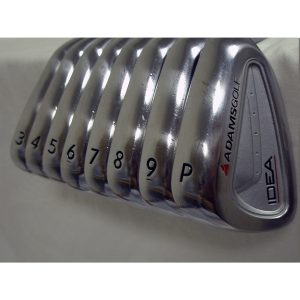
- Steel
- Stiff
- 9 pounds
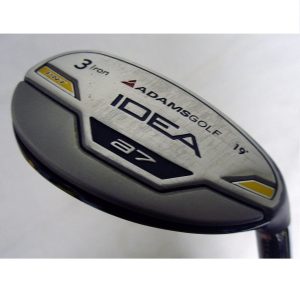
- UST Proforce
- Stiff
- 2.3 pounds
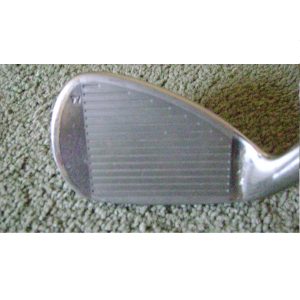
- Steel
- Stiff
- Right-Handed
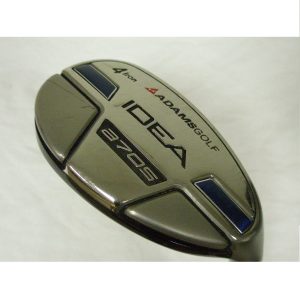
- Hybrid
- Ultra thin crown lowers CG
- Thin face increases ball speed
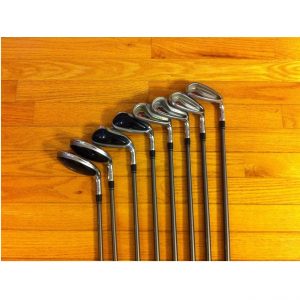
- Graphite
- Regular
- Right-handed
Choose the Best Adams Iron
Customer’s Choice: the Best Rated Adams Irons
233 users answered this survey. Please help us improve this review!
The Adams product range is not confined to their famous Tight Lies fairway woods, as the business manufactures, and offers a wide variety of items, including traditional and hybrid irons. In addition to promoting the products, pro golfer Tom Watson is still interested in design and research.
The interesting thing is most Adams clubs are very underrated. Many golfers associate them with lower-end equipment but they are becoming more popular among semi-professional and pro players. They manufacture well-built and integrated iron sets.
If you are also interested in Adams irons and want to try one of these clubs on the field, check the following guide. Unbiased golf experts compiled the reviews for 5 different Adams irons. The specs of each club are gathered in the comparison table. Also, a few useful tips can be found in the buying guide.
Table of Contents
Adams Idea A-Tour Irons Set 3-PW – the best for pointing!
 This set includes classic and hybrid irons. The mixture of the forged cavity back irons and the Easy to reach 3 & 4 hybrids is an outstanding match. The irons are really pure knives. They’re quick to aim and fire at the goal. Hybrids are absolute space ships that get the ball up fast and take it a long way. This set can be recommended for high-handicappers and mid-handicappers.
This set includes classic and hybrid irons. The mixture of the forged cavity back irons and the Easy to reach 3 & 4 hybrids is an outstanding match. The irons are really pure knives. They’re quick to aim and fire at the goal. Hybrids are absolute space ships that get the ball up fast and take it a long way. This set can be recommended for high-handicappers and mid-handicappers.
The trajectory is simple to manage, with high and low frames being easy to produce. The shafts are literally incredible because they have a torsional stiff factor to hold the ball into the line when giving you the push you need to bring the ball away.
These irons are really accommodating when it comes to mishits. It’s quick to find the fairway or the tee. They’re a ball going straight either direction.
Adams Idea A7 3 Iron 19 Hybrid– the best for the rescue!
 Adams has a good reputation in the hybrid industry, especially among pro golfers. Any pro golfers have found that this Concept A7 3-iron is as accommodating as some, yet it will give you a superb piercing ball flight.
Adams has a good reputation in the hybrid industry, especially among pro golfers. Any pro golfers have found that this Concept A7 3-iron is as accommodating as some, yet it will give you a superb piercing ball flight.
The 41 g rear weighting assists to raise the pitch angle as well as the distance. The only advantage is the enhanced camber configuration, which ensures stronger performance from a larger spectrum of lies.
This club was individually built to flow through the next and work better than the golf clubs in a traditional iron package.
The broad face looks challenging to strike from the semi-rough, but it has done superbly, due to its well-weighted head. In terms of the forgiving form, stronger ball strikers would always be able to find a strong balance.
Adams Idea A2 OS 8 Iron– the best for improving the distance!
 These Adams irons have the key purpose: to free golfers from concern over hitting long irons. The A2 OS iron takes out the long irons that novice golfers often have trouble striking.
These Adams irons have the key purpose: to free golfers from concern over hitting long irons. The A2 OS iron takes out the long irons that novice golfers often have trouble striking.
Adams took the CG and reduced it to 11% and 2.5 times deeper than normal irons. This gives the package a high start, improved distance and accurate gaping. The MOI is 30% better, offering more forgiveness to the clubs, and a wide-ranging, one-size-fits-all template gives simple hits from all lies. The shafts are compact and only usable in graphite. These portable head irons protect hybrid clubs.
Adams A7OS 4 Hybrid Iron – the best for forgiveness!
 These Adams golf clubs are providing excellent results at a fair price. These clubs utilize proprietary gaping technologies to guarantee that there are clear distance differences within each club. And all clubs have been designed to make it easy to strike crisply and encourage improved launch conditions, longer strikes and more flexibility.
These Adams golf clubs are providing excellent results at a fair price. These clubs utilize proprietary gaping technologies to guarantee that there are clear distance differences within each club. And all clubs have been designed to make it easy to strike crisply and encourage improved launch conditions, longer strikes and more flexibility.
Used Adams Idea A2 OS Iron Set– the best for the price!
 Rarely the guides on this website include used items. The thing with Adams irons is that you may use them as extra or weekend golf clubs. That’s why there is no need to pay the full price. This set is a second-hand product in a great condition.
Rarely the guides on this website include used items. The thing with Adams irons is that you may use them as extra or weekend golf clubs. That’s why there is no need to pay the full price. This set is a second-hand product in a great condition.
The Adams A2 OS has an overweight head with a large body, a highly curved face and a mass of offset. The 5-7 irons get a hollow back design that transfers the weight back and forth, and the 8-PW are absolute cavity backs. These golf clubs are fast to swing, and the amazing thing about this package is that you’re not likely to surpass those clubs very easily.
You’re going to get a nice loft at a high pace. Its 30 % higher MOI (vs. traditional irons) gives more forgiving and its large sole designs deliver a pleasant, easy-to-do range of irons from both lies and playing conditions.
The Buyer’s Guide
Types:
- Forged irons. Forging a club is somewhat close to what the blacksmith village used to do. The metal is plunged into a rough form, and pounded to the desired design. The maker then has a raw cast iron, which is a near resemblance to the final club handle. The carbon steel clubhead is then completed by grinding, grinding and polishing. The final outcome is a strong, one-piece iron with a decreased sweet spot. Usually, forged irons are targeted at strong players who put more emphasis on the club’s feel and ability to form the shots and monitor the trajectory;
- Cast irons. The contrast to forged steel irons is cast iron. This form of iron requires pouring molten metal into a mold that helps manufacturers to produce more complicated head designs. For this purpose, cast irons are more ideal for multi-material, perimeter-weighted and intricate irons. The casting method is simpler and cheaper than a forged iron, which is the explanation for the lower price point;
- Blade irons. These clubs are built for stronger players and have a thin profile, a thin top line and a small hitting field. Generally, the blades disperse weight equally over the whole head, creating a slight “sweet spot” in the middle of the head. Since more weight is put behind the sweet spot, it gives more consistency and ability to form the shot than the back of the cavity, which is why blade irons are often alluded to as muscle backs;
- Cavity back irons. A back iron cavity is a club that puts a gap in the back of the head, focusing more weight on the circumference. By applying more weight to the sides of the club, manufacturers are able to raise the moment of inertia (MOI) or the club’s forgiving. Usually, a wider club’s head is combined with a thin clubface, which ensures that the off-center shots go longer and straighter than the off-center shot with a blade iron. This improved forgiving decreases the feel that ensures that the back iron cavity is better suitable to low to high handicap golfers who profit from a wider sweet spot;
- Sets of irons. Iron is typically available in packs of up to 9 irons. Across each set, the irons are labeled to match the loft. Long irons in a package are typically 2, 3 and 4, but it is uncommon to have two or even three irons these days;
Shafts:
- Steel shafts. Steel is the most widely chosen shaft for irons. Steel is harder and thicker than graphite, which ensures that it creates less flex and is more precise and reliable. The carbon or stainless steel applied in the shafts is thick and gives a reliable torque and flexibility, enabling you to get the same stiffness and flex in your 4 irons that you have in your 9 irons. The reduced price and the extremely rugged quality of the metal make it a common alternative for golfers;
- Graphite shafts. Not as popular as steel in the iron industry, graphite can also be a tremendous asset since it is portable and versatile. This helps you to improve the pace of swinging and probably unlock more range in your game. The downside to graphite is the feel of the shaft;
- Multi-material shafts. The multi-material shaft is a less popular type. This form of shaft incorporates both graphite and steel in a single shaft. It appears to be constructed mostly of steel, with only a graphite tip. The steel portion of the shaft provides a powerful shaft that enables players to handle the ball better. The graphite tip helps the club to provide a finite amount of extra speed in the ball that will help create more reach. The graphite tip often helps to flush out any unnecessary vibrations in touch to maximize the feel of each shot;
Other tips for buyers of Adams irons:
- Always choose the irons, according to your skills and preferred shape or flex;
- Price is relevant for beginners. It is better to invest in the used but top-notch golf clubs then buy cheap but new irons;
- The shaft flex is important. The flex – the amount of the club’s bend – ranges from senior to ladies. Regular, extra stiff and stiff flexes are the most popular among professional and semi-professional golfers;
- Try a few various irons with steel or graphite shafts;
Video Tutorial: Adams Golf – Deep Blue
Final thoughts
Adams is the leader of rescue club builders in the United States, where a number of Tour pros utilize their items. You are free to pick the irons made with high-quality materials and good specifications. However, you should understand there are many counterfeits, so beware.







I initially wanted to get the Adams A-Tour irons set but it wasn’t on Amazon so I had to go with something else. After a bit of research I concluded that the Ram Golf FX stainless steel iron set 4-PW for mens right hand. Now I think I made a good choice as this set is very good and well worth the money I paid for it. If you’re thinking of getting it here is a pro tip: go for the longer length 😉 You’ll thank me later!